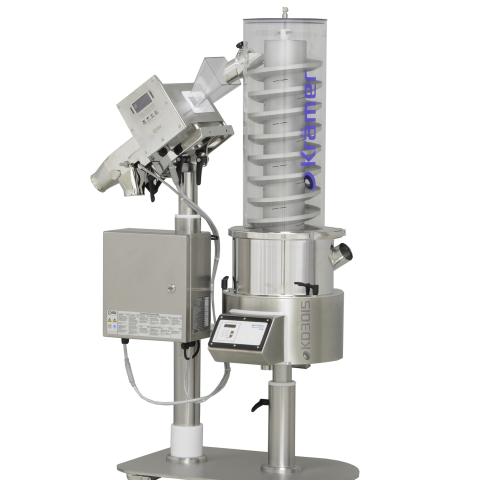Tablet Deduster with Metal Detection

Our Best Selling Tablet Deduster with our Integrated Metal Detector
The KD3010 Tablet deduster with our unique acceleration control combined with a metal detector by the world renowned CEIA. Reasonable alternative to the high-end dedusters featuring reduced user functionalities.
- Upward conveying heights 250 to 500 mm
- Conveying of tablets 3-25 mm diameter
- Improved dedusting and deburring capabilities thanks to optimized combination of vibration, dust agitation, air and vacuum suction
- Featuring an acceleration sensor that assures constant vibration, independent of the load / amount of tablets in the deduster
- Very high conveying capacity
- Easy height adjustment, full 360° freedom of rotation at tablet inlet
- Vibration-free housing, patented drive unit
- Compact design, minimum footprint
- Easy assembly and disassembly, no tools are needed
- Easy to clean
Best-in-Class Metal Detection for Tablet and Capsules
CEIA is an industry leader and world recognized in industrial metal detection systems used in securities, ground search, food, textiles and trusted by TSA at airports across the United States.
The Pharmaceutical division includes several state-of-the-art Quality Control Metal Detectors that offer full compliance with FDA requirements Part 210 and Part 211. The THS/PH21EE provides superior metal detection in the manufacturing process of this strictly regulated industry. The highly reliable proprietary digital technology delivers a consistent detection far metal contaminants in tablets, capsules and powders. All models feature a mirror finish on the 316L Stainless Steel that offers the best level of sanitation achievement.
Superior Detection Capability
CElA THS/PH21EE Metal Detection Systems feature extremely high detection sensitivity towards contaminating metals, whether ferrous, non-ferrous or stainless steel. Once a contamination is detected, the system rejects the identified material. The system's fail safe operation monitors the opening and closing of the ejection flap through a redundant confirmation sensor.






